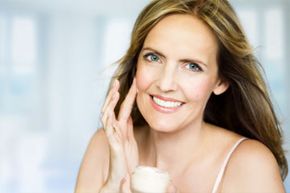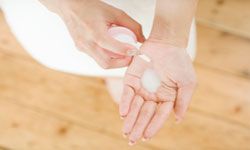Splotches and blotches may make for a great tie-dyed T-shirt, but a mismatched or patchy color palette usually isn't the best look for your skin. If parts of your skin have changed color -- and not because you got a tattoo -- you may have hyperpigmentation. Fortunately, skin-lightening moisturizers, sometimes known as skin bleaches, can sometimes reverse this condition.
Hyperpigmentation is related to the melanin, or the pigment produced by melanocyte cells, in your skin. When your body produces too much melanin in one area, hyperpigmentation -- or darker spots on your skin -- is the result [source: U.S. National Library of Medicine].
Advertisement
Overproduction of melanin can happen for a variety of reasons. Take sun spots, for example. When the skin is exposed to potentially harmful ultraviolent light such as the sun's rays, the body may produce extra melanin for protection. When those concentrated areas of melanin are greater than normal, or clumped together, the result is called sun spots or liver spots. Though sun spots aren't dangerous, they can be unattractive [source: Mayo Clinic]. Other forms of hyperpigmentation, like melasma, are the result of hormones that trigger excess pigment production [source: WebMD]. For example, women may experience melasma during pregnancy.
Skin-lightening moisturizers are helpful in treating skin pigment problems because they are formulated to penetrate deep into your skin and gradually reduce the appearance of the concentrated pigment, sometimes helping it to fade altogether [source: Mayo Clinic]. However, skin-lightening products can have side effects. Check with your physician before you begin using these products, which are available in both over-the-counter and prescription formulas. Using skin-lightening products incorrectly or for too long could put you at risk for serious complications.
As with other products designed to treat skin problems, it's the particular combination of ingredients in skin-lightening moisturizers that makes them effective. Keep reading to find out exactly what's in skin-lightening moisturizers.
Advertisement

